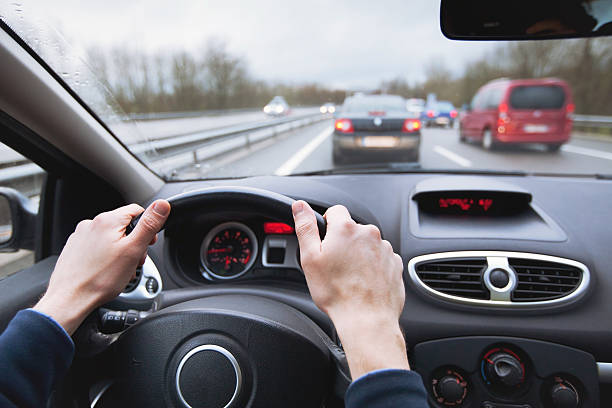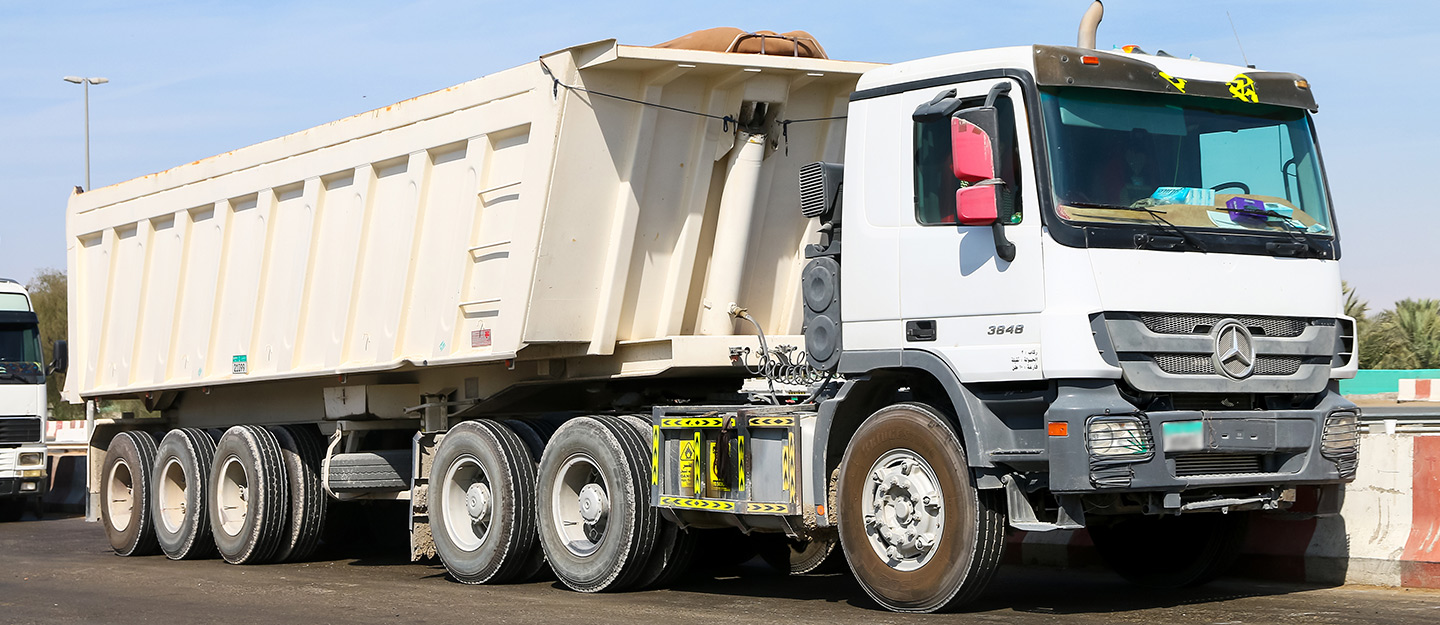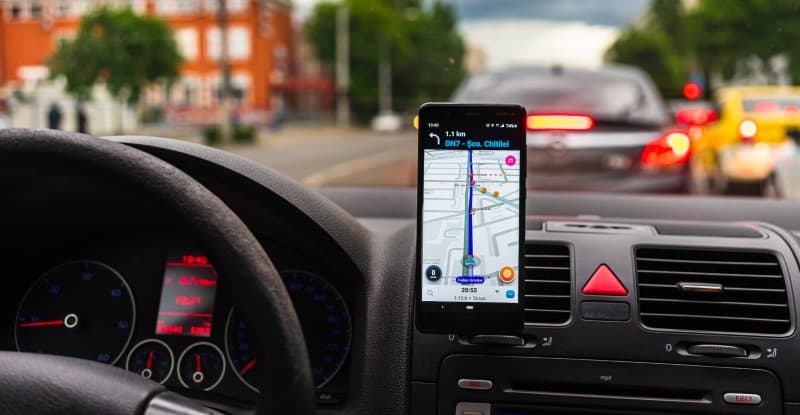Dynamic Speed Control by Route, Load & Location
Sep 6, 2025 Resolute Dynamics
Smart vehicles can now adjust their speed automatically—based on the road, the weight they’re carrying, or even where they are. This technology is called dynamic speed control, and it’s helping fleets around the world drive safer, use less fuel, and stay compliant with local traffic rules. With AI, real-time telematics, and advanced control systems, your vehicle knows when to slow down and when it’s safe to speed up—without you even thinking about it.
Let’s break down how it all works and why it matters for your fleet.
What Is Dynamic Speed Control?

Dynamic speed control is a smart system in vehicles that automatically adjusts speed based on changing factors like road conditions, cargo weight, or driving zones. It replaces guesswork with real-time data and decision-making.
Think of it like cruise control—but a thousand times smarter. Instead of setting a single speed, the vehicle decides the best speed depending on the situation. This reduces driver error, improves safety, and helps follow local speed limits.
At Resolute Dynamics, we use AI, vehicle sensors, and telematics to power this dynamic control. It’s part of our broader platform that lets your fleet capture data, connect it, and then control the vehicle in real time.
Why Adjust Speed Based on Route, Load, or Location?
Every road is different. A truck driving on a narrow mountain road shouldn’t go the same speed as one on a straight highway. And a heavily loaded delivery van takes longer to stop than an empty one.
Here’s why dynamic speed matters:
-
Routes vary: Urban streets, school zones, or highways all require different speeds.
-
Loads shift: Heavier cargo affects braking distance, tire grip, and fuel use.
-
Locations change: Speed limits and road safety laws are different across cities, countries, or even neighborhoods.
Dynamic speed control keeps your vehicles smart and safe by adjusting in real time to these changing conditions.
The Technology Behind Smart Speed Control
Dynamic speed control may seem simple on the surface—slow down here, speed up there. But behind the scenes, it’s powered by a network of advanced systems working together in real time to make split-second decisions. These technologies form the backbone of intelligent vehicle management and are central to Resolute Dynamics’ Control platform.
Let’s break them down.
AI Algorithms That Think Ahead
At the heart of dynamic control is artificial intelligence—not just programmed rules, but systems that learn and adapt. These AI models analyze:
-
Past driver behavior
-
Typical traffic patterns
-
Environmental inputs like weather or road conditions
-
Route history for specific geographies
For example, if a driver usually takes a curved mountain road at sunset, the system learns that visibility drops at that time and may recommend or enforce a slower speed.
Telematics: The Central Nervous System
Telematics is the data bridge that connects everything in the vehicle to a central processing unit or cloud-based fleet platform. Think of it as the nervous system that gathers signals and routes them to the right place.
It pulls data from:
-
GPS modules to detect precise location
-
OBD-II or CAN bus to access engine, braking, and fuel data
-
External databases to identify local speed laws, traffic updates, and road hazards
Through real-time communication, the system can flag dangerous speeds instantly, or push firmware updates to improve behavior.
Smart Sensors: Eyes and Ears of the System
Modern vehicles rely on a suite of sensors that feed raw data into the AI engine. These include:
-
Cameras and vision systems to detect traffic signs, lane markings, pedestrians, and stop zones.
-
LIDAR and radar units to calculate distance from other vehicles or obstacles.
-
Accelerometers and gyroscopes to measure movement, tilt, and turning behavior.
-
Load sensors or air suspension pressure monitors to estimate vehicle weight in real-time.
Together, these sensors give the vehicle a 360-degree awareness of its environment—much like how a pilot relies on instruments to fly.
Machine Learning: Smarter Over Time
Machine learning is what makes the system evolve. Instead of just reacting, the platform starts to anticipate changes based on:
-
Seasonal driving trends (e.g., foggy mornings in winter)
-
Repetitive delivery routes
-
Driver-specific behaviors like harsh braking or aggressive turning
Over time, the system becomes uniquely tuned to each fleet, road condition, and driver.
ML also supports:
-
Anomaly detection: Spotting when vehicle behavior is outside normal range.
-
Fleet benchmarking: Comparing performance across multiple vehicles and locations.
-
Continuous calibration: Refining speed control recommendations based on new data.
How It All Comes Together
These technologies don’t work in isolation. Resolute Dynamics’ Control platform acts as the command center, integrating AI, telematics, sensors, and machine learning into a single real-time ecosystem.
Here’s how they interact in a typical situation:
-
The GPS detects the vehicle entering a school zone.
-
Vision systems confirm speed limit signs and road markings.
-
Load sensors adjust braking calculations due to a full cargo hold.
-
AI engine evaluates the route, current speed, and risk level.
-
The Control system reduces engine torque and applies safe speed constraints.
-
Data is logged to the fleet platform for reporting, training, or compliance audits.
The result? Instantaneous, intelligent, and compliant vehicle behavior—without burdening the driver with constant decisions.
Speed Control by Route Type
Let’s say a truck is driving through a city, then onto a highway, then into a rural area. Normally, the driver would have to keep adjusting their speed—hoping they don’t miss a sign or get a ticket.
With dynamic control, the vehicle:
-
Detects route type through GPS and digital maps.
-
Identifies school zones, toll areas, construction zones, and curvy roads.
-
Changes speed accordingly and alerts the driver, or automatically reduces acceleration.
This helps prevent speeding violations and increases road awareness—especially in areas where sudden speed drops are common.
Speed Control Based on Load

Every experienced fleet operator knows this truth: A vehicle’s weight directly affects how it drives. Whether you’re hauling concrete, electronics, or fresh produce, the load inside changes everything — from braking distance to engine strain.
Dynamic speed control systems now factor in these load variations in real time, adjusting the vehicle’s behavior automatically. This isn’t just about safety — it’s about vehicle performance, regulatory compliance, and driver confidence.
Understanding Load Impact on Vehicle Dynamics
Let’s start with the basics: as vehicle mass increases, so does momentum. This means:
-
It takes longer to stop.
-
It’s harder to steer around tight corners.
-
It puts more strain on tires, brakes, and suspension systems.
On a flat highway, this might not matter much. But in an urban setting — with stoplights, crosswalks, and pedestrian zones — it’s critical. The risk of overshooting a stop or tipping on a sharp turn grows dramatically with heavier loads.
How Vehicles Measure Weight and Distribution
Today’s smart vehicles don’t need manual input to “know” they’re carrying more weight. They use several integrated systems:
-
Onboard Load Sensors
-
Located in suspension struts, axles, or airbags
-
Measure axle pressure to estimate total cargo weight
-
Some systems even detect uneven weight distribution, which affects turning stability
-
-
Torque Feedback Systems
-
Monitor how much engine torque is required to move the vehicle from a stop
-
Higher-than-usual torque signals increased load
-
-
Brake Assist & ABS Feedback
-
If braking takes longer or the system senses reduced grip, it flags the possibility of a heavier load or imbalanced distribution
-
Real-Time Speed Adjustment Based on Payload
Once the system detects the load weight and distribution, it adjusts several key driving parameters:
Speed Limiting
-
Automatically caps the top allowable speed based on payload.
-
For example, a fully loaded 18-wheeler might be limited to 80 km/h instead of 100 km/h.
Braking Calibration
-
Modifies brake pressure timing to prevent skidding or brake fade on downhill routes.
-
Integrates with Electronic Brakeforce Distribution (EBD) for more balanced stops.
Hill Descent Control
-
Engages automatic braking when descending slopes with a heavy load.
-
Especially useful in mountainous areas or construction sites.
Curve Speed Reduction
-
Uses gyroscopes and load data to reduce speed before sharp turns, preventing rollovers due to high center of gravity.
Traction Management
-
Adjusts acceleration to reduce wheel spin when pulling a heavy load on wet or gravel surfaces.
Legal & Safety Implications of Ignoring Load-Based Speed Control
In many regions, heavy vehicles are legally required to obey load-specific speed limits. For example:
-
In the UAE, transport vehicles carrying over a certain tonnage must reduce speed in city zones.
-
In the EU, tachograph data is reviewed for violations where load weight and speed don’t match regulations.
-
Some insurance providers in Asia now mandate automated load detection systems as part of fleet safety compliance.
Failure to adjust speed for load can result in:
-
Traffic violations and fines
-
Brake failure or overheating on descents
-
Rollovers during sudden swerves
-
Increased stopping distance collisions, which are among the most common types in logistics fleets
Integration with Fleet Management Systems
For fleet managers, Resolute Dynamics’ Control system offers live monitoring and alerts:
-
Receive real-time data on vehicle load vs. actual speed
-
Get alerts if a vehicle is overloaded and moving too fast
-
Use this data for driver coaching, insurance reporting, and regulatory audits
Fleet operators can also pull historical reports to analyze trends:
-
Are certain drivers regularly speeding under load?
-
Are certain routes causing load-related braking issues?
Emerging Innovations in Load-Based Control
The technology is evolving fast. Here’s what’s next:
-
Smart trailers with load sensors that sync wirelessly with the vehicle’s ECU
-
AI load distribution mapping to recommend how cargo should be placed for optimal handling
-
Dynamic route adjustments in real time based on current payload and road gradient
Location-Based Speed Adjustments

Imagine a delivery van moving through Dubai, entering a residential area with stricter speed limits. Instead of relying on the driver to spot every sign, the vehicle’s control system reads:
-
Live GPS coordinates
-
Speed zone data pulled from maps and traffic APIs
-
Local regulations, even temporary ones during events or roadwork
It then adapts:
-
The maximum speed
-
The acceleration curve
-
The alert system for driver feedback
This isn’t just helpful—it’s essential for fleets operating across countries like UAE, India, or Southeast Asia where traffic rules vary greatly.
Real Fleet Use Cases
Here are some real-world examples of dynamic control in action:
Use Case 1: Dubai Logistics Fleet
One fleet in Dubai used Resolute’s systems to monitor route and location in real-time. During peak hours, speed was automatically reduced in downtown areas to avoid accidents. This led to a 22% drop in speeding violations and better insurance ratings.
Use Case 2: Cross-Border Trucking in Asia
A logistics provider operating from India to Thailand used load-based control. As cargo weight changed, the system adapted engine torque and speed. Fuel efficiency improved by 11%, and tire wear reduced significantly.
Benefits of Intelligent Speed Management
With smart speed control, the advantages are clear:
-
Fewer accidents from human error
-
Lower fuel use from optimized acceleration
-
Legal compliance across all zones
-
Improved insurance premiums
-
Happier drivers who feel safer and less stressed
It’s not just about control—it’s about predictive safety that works 24/7.
What Are the Challenges?
Even the smartest systems face a few road bumps:
-
Sensor Calibration: If not set up right, even a small error can misread weight or speed zones.
-
Connectivity Gaps: In remote areas with poor signal, real-time adjustments may lag.
-
Local Law Differences: Adapting systems to each country’s laws takes effort.
Still, these are being solved quickly with better AI models and global compliance integrations.
What’s Next for Dynamic Speed Control?
The future is fully autonomous fleets with zero manual input. Here’s what’s coming:
-
Predictive speed planning before the trip starts
-
Crowdsourced traffic data for better route decisions
-
Automated decision trees to replace driver choices
-
Integration with electric vehicles for energy-saving route speeds
Resolute Dynamics is already building toward these innovations with its AI-led ecosystem for fleet intelligence.
Conclusion
Dynamic speed control isn’t just a tech upgrade—it’s a smarter, safer way to manage fleets in real-world conditions. By adjusting speed based on route, load, and location, your vehicles become proactive, not reactive.
The result? Fewer accidents, better fuel economy, and peace of mind that every journey is under control.
FAQs
Q: Can dynamic speed control work in real time?
Yes. It uses live data from GPS, sensors, and the cloud to adjust speed on the go.
Q: How does cargo weight affect vehicle speed control?
Heavier loads increase stopping time and reduce handling, requiring slower speeds.
Q: Is this system legal worldwide?
Most modern countries support it. Local compliance settings can be added per region.
Q: Can drivers override the system?
Yes, but alerts and logs ensure they’re aware of risks or violations.